Case studies can vary significantly in scope and length as sometimes it is necessary to look into additional details revolving around the initial problem and solution. It usually focuses on a customer’s journey and interactions with a business and how their product or service solved a specific need/issue A case study is a document detailing the process and findings after examining a particular problem and how a business or person addressed or intended to address it through strategic solutions.
Free Templates
Here are customizable free case study templates to download that can help you to present your skills in a more professional manner.
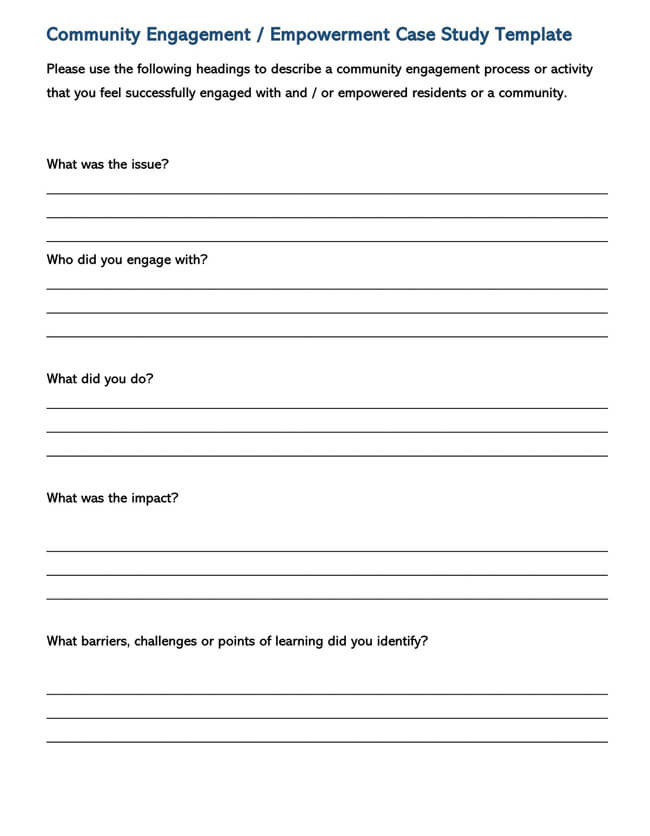

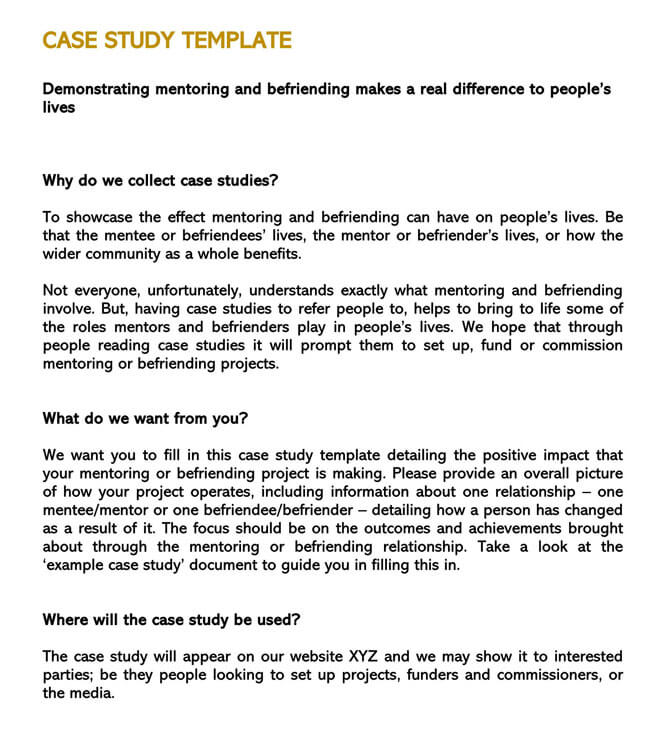

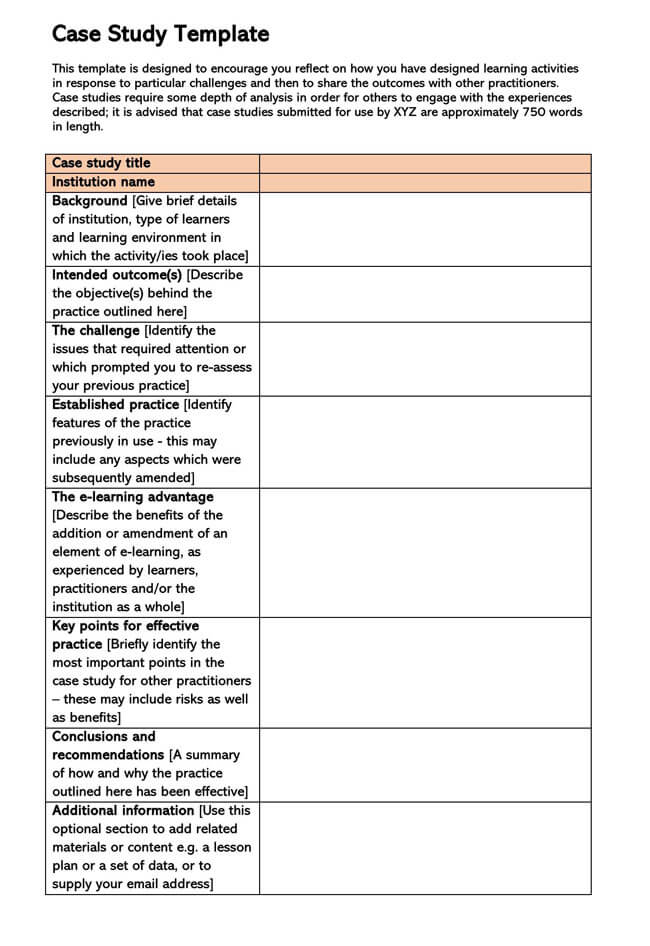
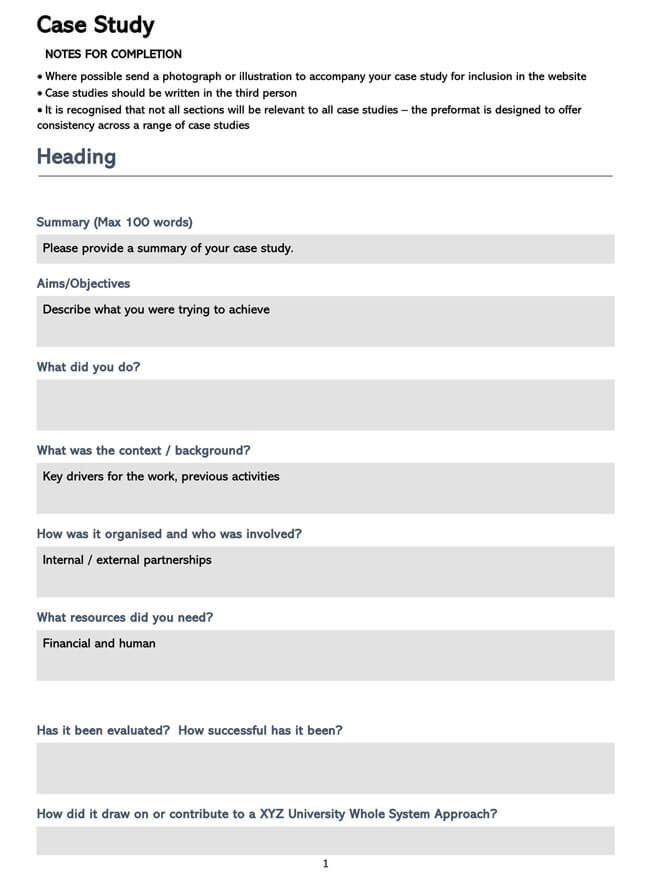

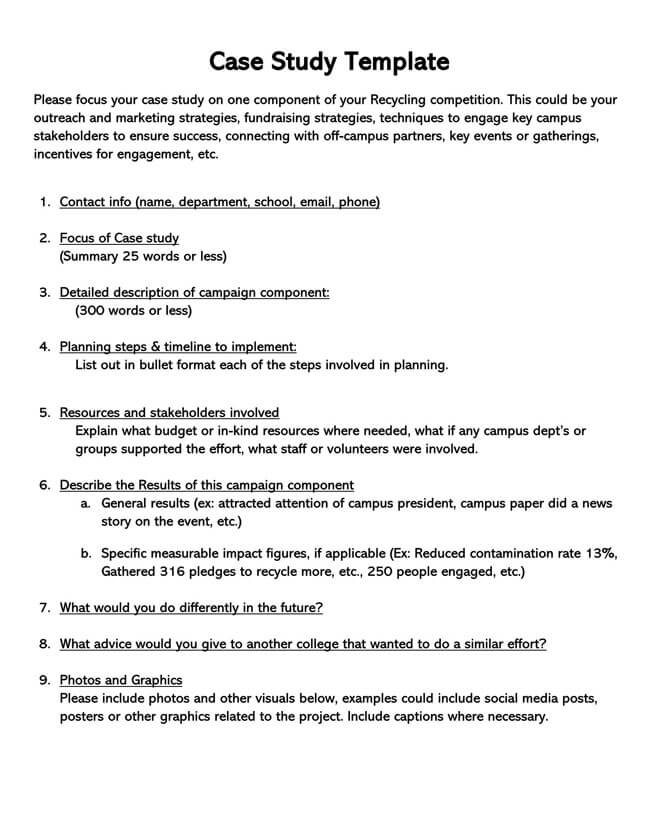
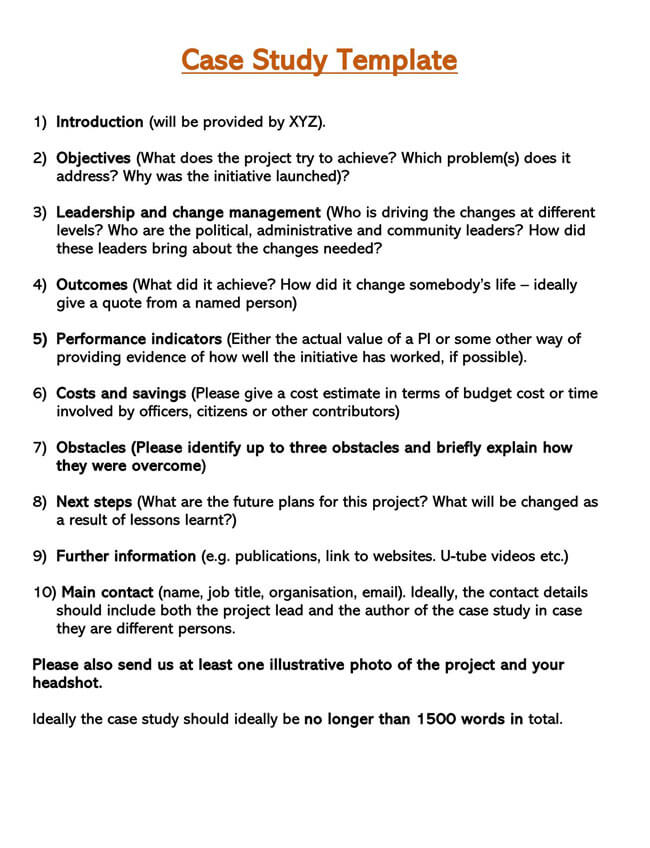

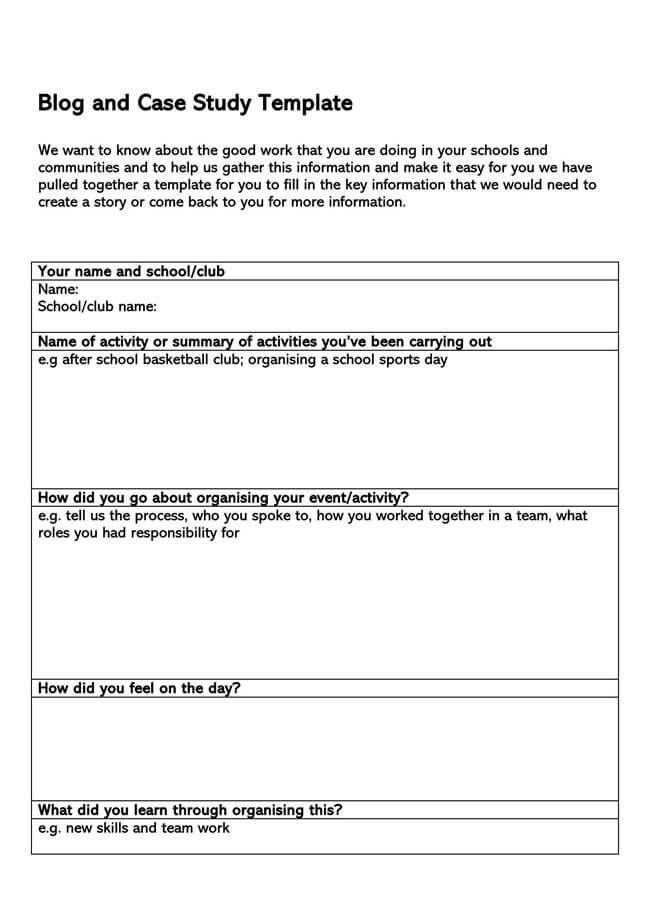
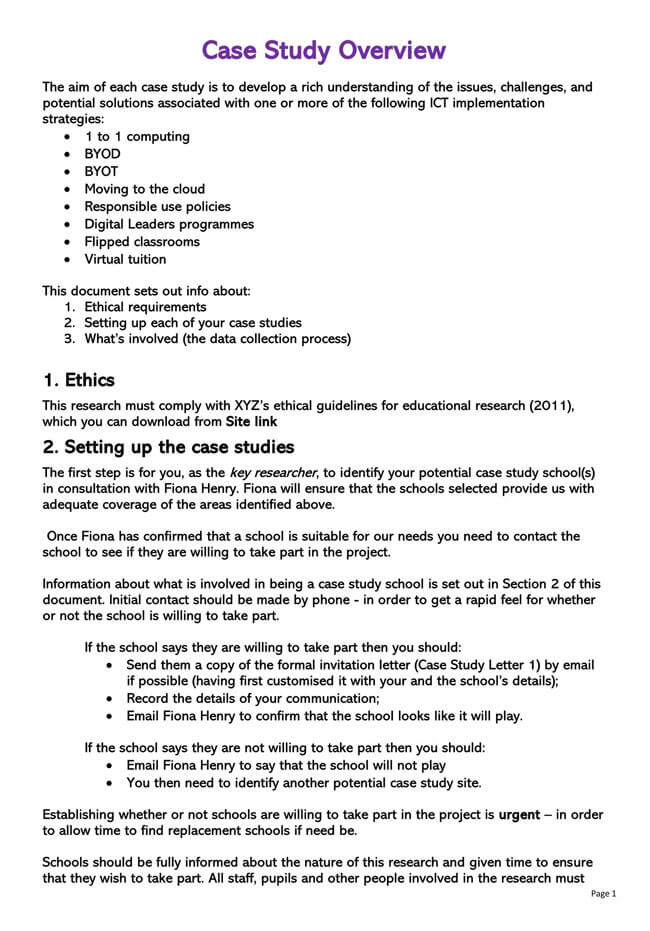
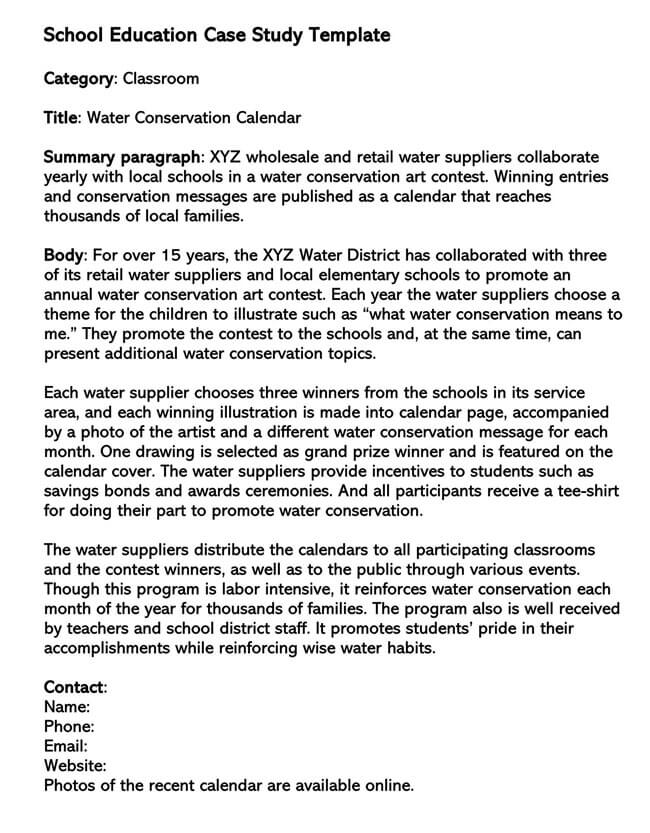
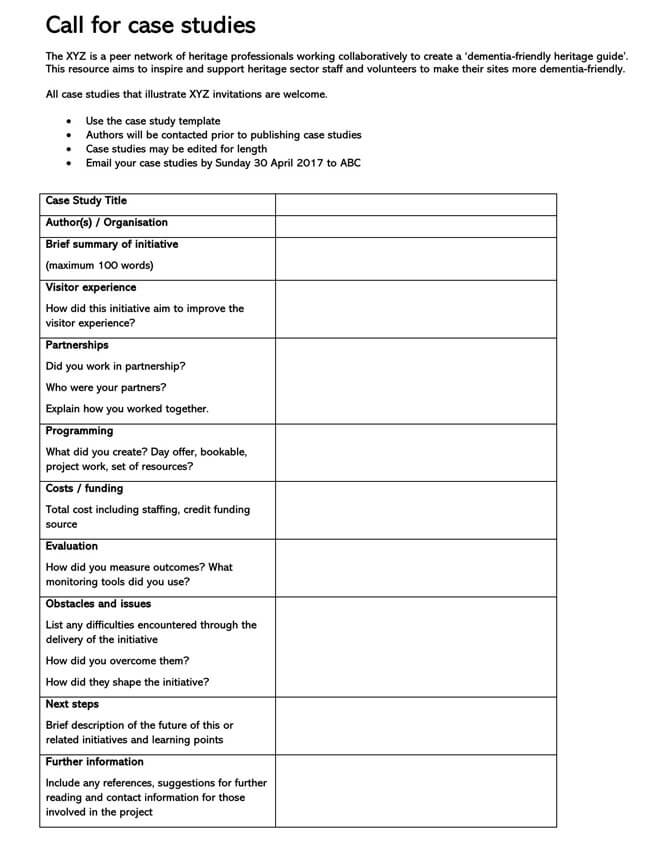
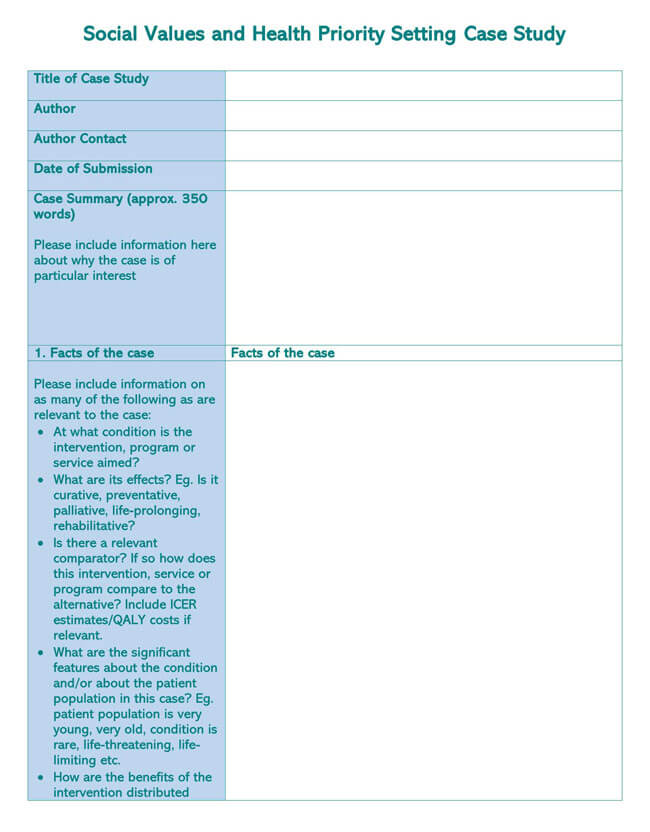
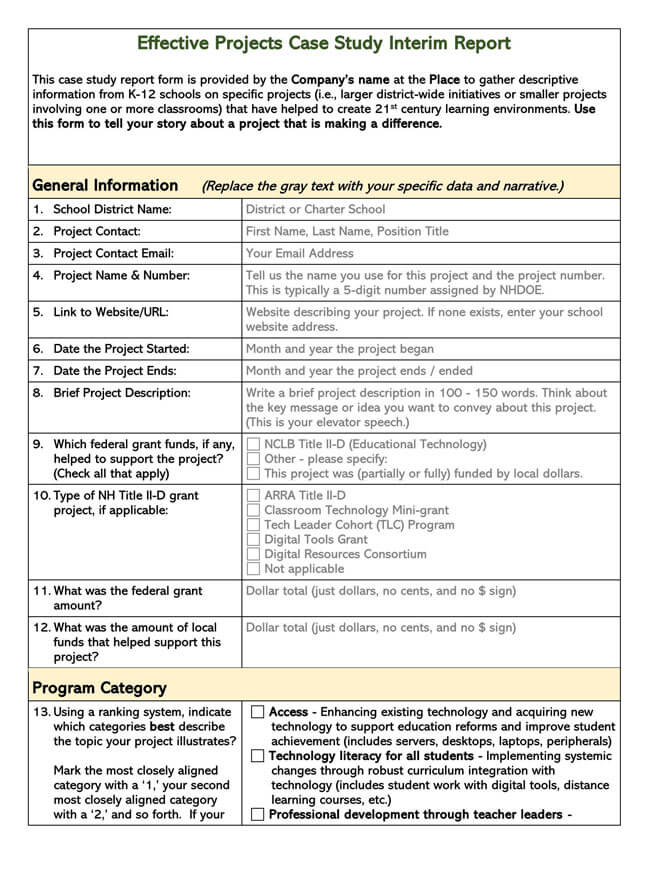
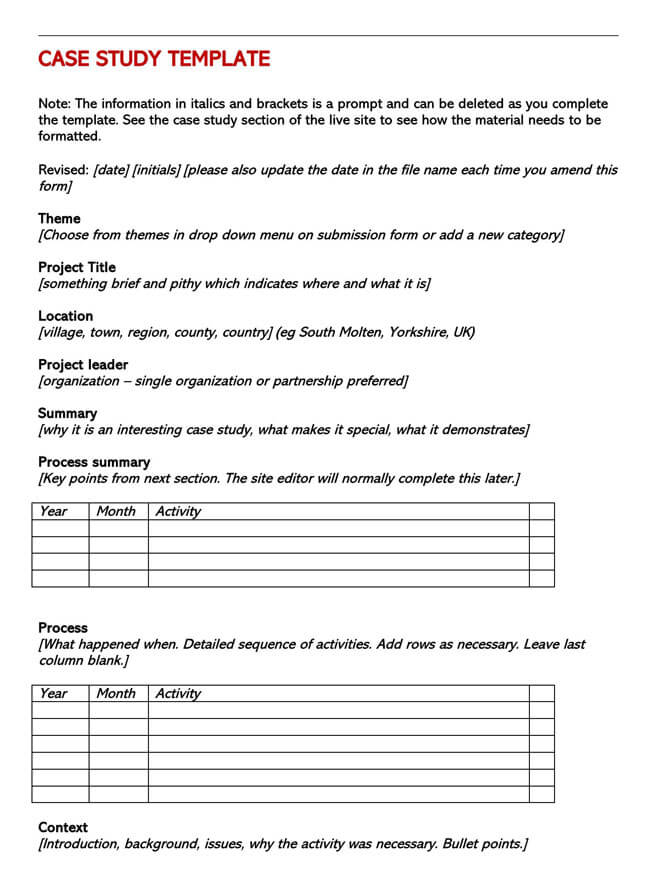
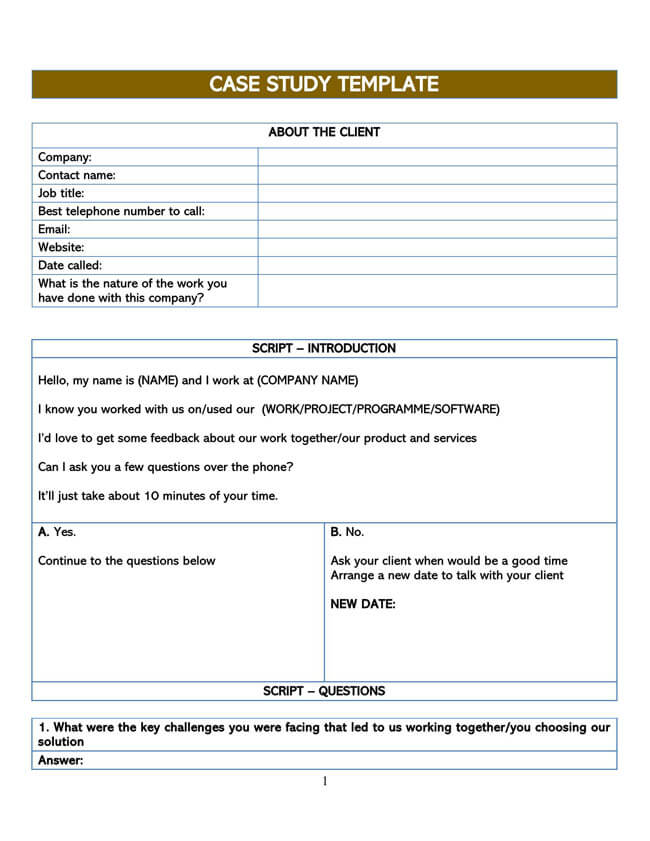
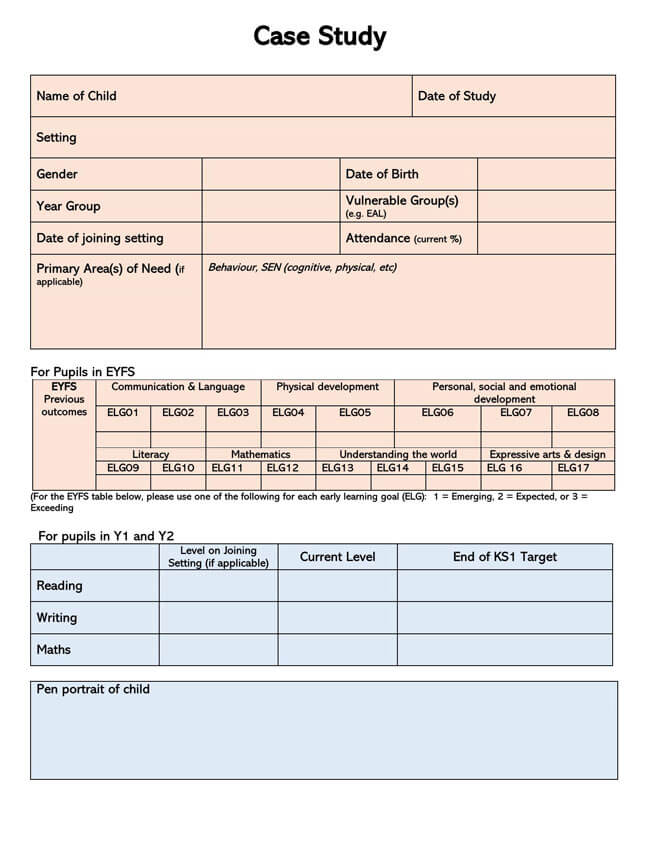


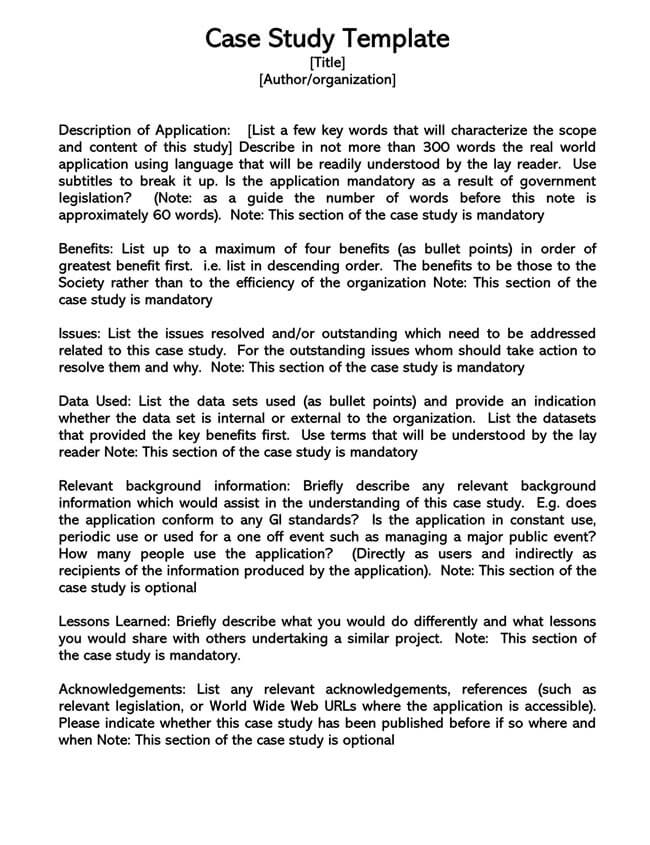
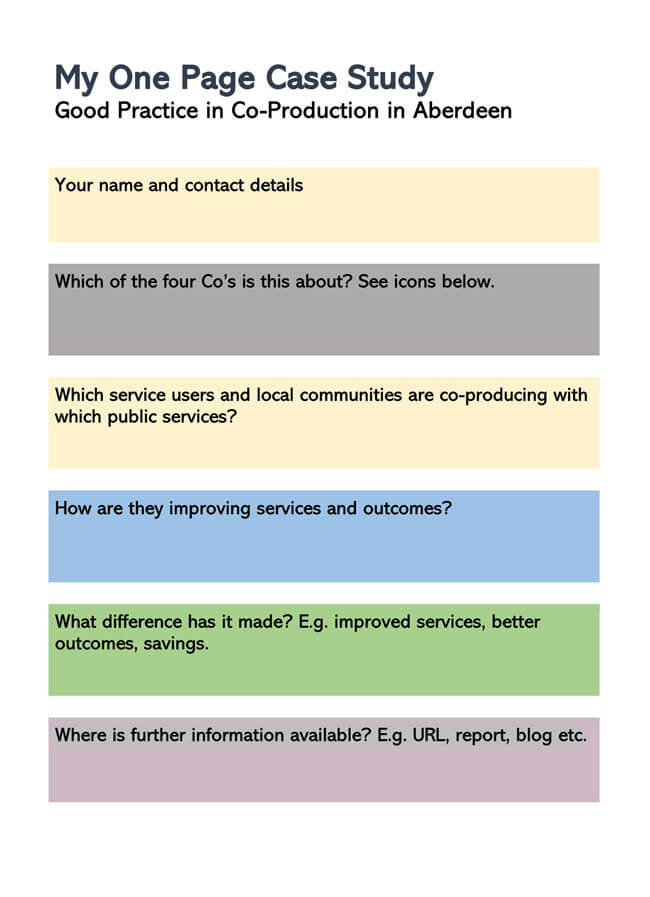
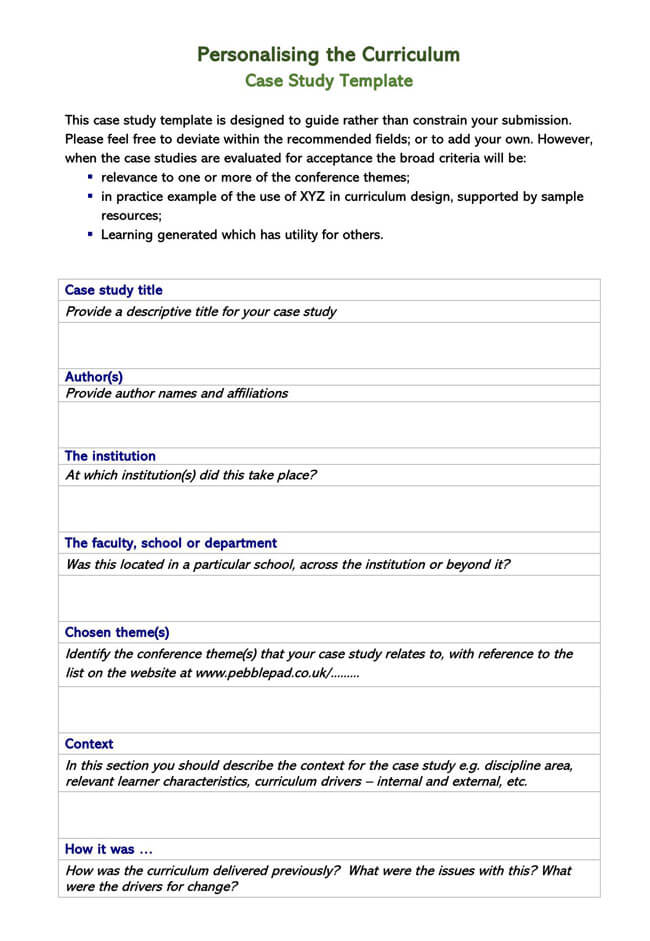

Importance of Writing a Case Study
Case studies evaluate business or customer-based problems and outline probable informed solutions available for implementation. A case study can be an excellent marketing tool as it provides hard proof of a problem that was solved through the proposed solution, product, or service provided. Case studies can and are used in all levels of business and all industries.
A case study will reflect on a story of a successful business partnership/transaction between a business and a client in a professional setting. This success is measured using metrics agreed on by the customer/client being featured in the case study known as key performance indicators (KPIs), which include customers closed, revenue gained, etc. Earning the trust of potential clients can be a bit involving, and that is where a case study comes in handy. It is proof of your ability to deliver what one claims to offer.
How to Conduct Case Study (Before you Write)
To come up with a case study that effectively communicates what it intends to convince a client to offer the business there are several steps one can adopt. We shall look into these steps to give further insight.
Case study’s objective
It is recommended that a person should begin preparing the case study by getting data and metrics as well as other pre-writing activities. As much as a case study is designed to prove your ability to solve a specific need/problem, it should also focus on other objectives of your chosen subject relevant to prospective clients. Determining these objectives should hence be your starting point. Examples of objectives that client would be interested in include;
- Client’s compliance with government regulation
- Lowering business costs (operational, production, administrative)
- Becoming profitable, for example, increasing sales and reducing production costs.
- Generating more leads
- Closing on more customers (increasing market share)
- Generating more revenue (increasing profitability)
- Expanding into a new market, for example, through the introduction of a new product.
- Sustainable or energy-efficient solutions
Identifying the problems
One should also establish the issue(s) the narrative will be addressing- normally those surrounding the candidate’s problem that was solved by your product or services. One can do this by identifying critical problems faced by prospective clients first and relating them to those that were previously faced by the candidate. One can then examine the issues and determine the cause(s) and their impacts on businesses or organizations.
Finding solutions
You should combine the information collected into a comprehensive narrative. A little creativity can be helpful, but the narrative should remain factual throughout. The case study subject journey should be presented in a way that is relatable to other customers. The narrative can take the structure of introduction, incident, rising action, the climax, falling action, and resolution. When evaluating solutions, utilize established data and KPIs (key performance indicators) to show how your product or service tackles the problem at hand. Show how the solutions directly impact the candidate or customer and the sort of results to be expected. Come up with different solutions from which the best alternative is chosen. The best solution can be characterized as relatable, accessible, supported by evidence, and has clear pros and cons.
Find the proper case study candidate
Once you have ascertained the medium you intend to use for marketing your case study. The following step is finding the right candidate to focus on in your case study. Below are elements you can use to sort out potential candidates.
- Product Knowledge: It is vital to select a client with more than average knowledge about the services and products one offers. This way, they can best speak from a client’s perspective.
- Remarkable Results: Clients who have experienced outstanding results from conducting business with one’s company. Such clients are expected to be enthusiastic and more compelling when discussing the products or services. For example, clients who experienced unexpected success from one’s products or services, for example, non-traditional clients, are also desirable.
- Recognizable Names: stories from more significant or more notable brands’ business clients tend to be more credible and have been observed to foster 24.4x as much growth.
- Switchers: Clients who switched after working with one’s competitor can demonstrate one’s competitive advantage and, therefore, more desirable.
Asking for the client’s permission
The next step is getting the subject involved. This can be done by first reaching out and providing them with the objective, format, timeline, and already established details of the case study. One should aim to provide an open and accessible stage of communication. The case study should also incorporate benefits to be gained by the subject.
Some of the benefits one can promise to the candidate include;
Brand exposure
One can illustrate how this case study can be an excellent opportunity to promote their brand. Case studies can be valuable tools to market both the service provider and the client. For example, in the B2B sector, where brand awareness is hard to collect beyond one’s market share, making the case study a client’s marketing tool can be persuasive. In that, they get to expand their brand reach.
Employee exposure
A case study can be written to include quotes with credits given to specific employees. When this is the case, a case study can be networking and career-development opportunities for employees of business clients.
Product discount
One can offer the subject client a product discount or free trial of a product or service one offers, especially if they are current customers.
Backlinks and website traffic
You can promise the client will enjoy an increase in website traffic once you publish the case study, which would link back to the subject’s website, known as a backlink. Backlinks are known to raise a website’s rank in the search engine results, resulting in increased traffic. Once they are satisfied and willing to participate, they can approve the case study, and the writing process can commence.
Include the right questions
Asking and including the right questions in the questionnaire and during the Interview is one of your tickets to a successful case study. Having the right questions will often lead to a convincing case study. The questions should be phrased such that their answers give insight into how valuable your products or services are. To achieve this, using the “Golden Rule of Interviewing,” which means asking open-ended questions rather than ‘yes’ or ‘no’ questions. For the Interview, questions can be structured to create flow by categorizing them into six sections.
- Opening with questions about the client’s/participant business- For example, how long they have been in business, number of employees, current objectives, etc.
- Cite a problem- This section should create context by highlighting the challenges that led to them looking for a solution—for example, asking them the challenges and solutions that led them to look for a solution.
- Discuss the decision process- Includes questions that explain how they decided to work with you by outlining how they got to know of the product or service, people involved in selecting the product or process, and competitor products that did not meet their demands and such—for example asking them how they heard of your product or service.
- Explain how a solution was implemented- Questions that detail the client’s/participant experience during the implementation process. For example, asking them how long it took to see the results of using the product or service.
- Explanation on how the solution works- Questions that detail how the participant uses or used the product or service. For example, by asking them who are currently using or previously directly used the product or service.
- End with results- Include questions that illustrate impressive measurable outcomes of using the product or services, for example, amount of time saved, the percentage increase in sales, etc.
Identify a case study medium
The next step should determine how you intend to create your case study and distribute it for maximum exposure. Using different avenues is encouraged to capture different markets and as many clients as possible.
A case study can be shared in either or all of the ways.
- Written case study: One can write the case study in the form of an e-book and then converting it to a downloadable PDF which can be published on a website/blog. A case study can also be written as a social media post, such as on Facebook.
- Video case study: One can plan on interviewing with the client, which can be recorded and uploaded on one’s YouTube channel or website. Seeing a client talk about their satisfaction with services offered in person can be more convincing.
- Infographic case study: One can choose to tell their story while quantifying success using major KPIs presented in charts in a long, vertical format of an infographic which can then be shared on Pinterest.
- Podcast case study: One can opt to have a casual conversation with a client and talk about how well their issues were resolved in a podcast. This can then be shared on any available platform such as Spotify or YouTube.
Layout your case study format
A case study can be written or visual (picture and videos) or a combination of both. When it comes to formatting a case study there is no one-size-fits-all. Therefore, one should format the presentation to fit their situation best and convey information gathered most clearly and concisely. It should be made easy to scan.
Publish and promote your case study
The final step should be publishing and promoting the case study to ensure it is accessible to the intended audience. The format can sometimes dictate the publishing method; for example, infographics are best suitable for Pinterest. Other ways to go about publishing and promoting include;
- Gated Behind a Blog Post- One can opt to write an abbreviated version of the story as a blog post and requesting readers to fill out their details (name and email address) if they would like to read the rest of the PDF. This method generates leads. Promotion of the blog post can be done through social media.
- Published as a Page on Your Website- Alternatively, one can choose to publish the case study on their website on its page and direct visitors from the homepage to read.
Draft and send a release form
The next step is to send the client a release form that outlines what one needs from the client. The needs could be in terms of permission to use applicable brand names, publicly share project information, and such. Sending a release form can be achieved by sending an email that details what one needs from them.
Case study release form
A case study release form will outline what one needs from the subject client. As a result, it can vary depending on the size, nature of business, and purpose of the case study. It includes details such as; an explanation purpose and utilization of the case study, a statement of potentially trademarked information such as name, logo, pictures of the company to be used, explanation of one’s expectations of the subject after the case study, and a note about compensation if applicable
Success story letter
It is a document that outlines the entire case study process and can include the following items;
- The Acceptance- Should seek approval from the subject’s marketing team. Under this section, one can propose the timeline to conduct the interview or case study.
- The Questionnaire- A questionnaire to be filled by the participant can be included. The case study questionnaire is designed in a way that the questions create a foundation to organize the Interview.
- The Interview- after completing the questionnaire, one should reach out to the participant and conduct a 30-60 minute interview. Custom questions that best reflect the participant’s experience working with you should be prepared.
- The Draft Review- Compose a draft that is sent to the participant for feedback and edits.
- The Final Approval– Once all appropriate alterations have been made, a copy of the proposed final document is sent to the participant for approval. Once approved, the case study can be distributed.
Writing a Case Study
Despite a case study not having a one-fits-all format, there are fundamental parts present in a standard case study.
These items include;
- Title– Should be kept short and interest to convince the reader to want to know more.
- Subtitle– A brief explanation of what was done (accomplished).
- Executive Summary– It is a summary of the entire story. It can be 2-4 sentences long and followed by 2-3 bullet points outlining success metrics.
- About the Subject– It is an introduction to the participant/client business. It is a profile of their business.
- Challenges and Objectives– A description of challenges the client faced before using your product or service. It can include the customer’s goals and objectives when seeking your services. It can be 2-3 paragraphs long.
- How Product/Service Helped– A 2-3 paragraphs describe how your product or service solved the client’s problem.
- Results- An illustration of how the set objectives and goals were achieved. This can be demonstrated using quantifiable measurements of success. It can be 2-3 paragraphs long.
- Supporting Visuals or Quotes– One can include one or two powerful quotes after the results. Visuals such as pictures in support of the narrative can also be included.
- Future Plans– An epilogue detail the participant’s plans as we advance, and if you are part of those parts can be included at this point.
- Call to Action (CTA)– Depending on the nature of your case study, one can opt to encourage to seek their services or products at the end of the case study.
After the case study is complete, please review it and ensure that it contains the following primary sections.
They include;
- Introduction- Outlines the purpose of the case study.
- Background- Introduces the reader to the narrative.
- Evaluation of the Case- Highlights significant details of the case study.
- Solutions- Outlines proposed solutions and how they address the issue at hand.
- Recommendations- Outlines how one advises the client going forward.
Case Study Examples
To further illustrate how case studies should look like, we will provide you with several examples that you can look at and review.
“New England Journal of Medicine,”- Corey McPherson Nash– Uses visuals to tell the case study client’s story.
“Shopify Uses HubSpot CRM to Transform High Volume Sales Organization,”- HubSpot– Employs mixed media (short video and text) to tell the narrative of Shopify.
“Designing the Future of Urban Farming,” by IDE- Adopts a simplified approach in crafting a case study while still outlining the ‘Challenge’ and ‘the outcome’ of the transaction, which a key pillars of a case study.
“Secure Wi-Fi Wins Big for Tournament,” by WatchGuard– Uses one medium, a video, to tell the entire story.
Rock and Roll Hall of Fame Boosts Social Media Engagement and Brand Awareness with HubSpot– This is an example that illustrates how photos, videos, and stats can be used to tell a successful business interaction.
Small Desk Plant Business Ups Sales by 30% With Trello- Majorly uses text to tell the narrative and is straightforward. Incorporates quotes from the management of the client company.
Facebook’s Mercedes Benz Success Story– Uses stats to illustrate how a service impacted a business and what tools and how they were used to obtain these results.
Tips for Writing a Winning Case Study
To improve the effectiveness and quality of your case study there are various tips that one can incorporate to this effect.
To highlight a few, they are outlined below.
- Ensure to take notes: There is always more to learn, and therefore it is good to jot down key points when reading or examining different case studies that can be useful when writing your case study.
- Know your target audience: Understanding your target audience will always influence what and how you write your case study. Different audiences will be looking out for different outcomes.
- Be relatable: The case study narrative should be relatable to your average clients. It should feel like the story is being told by a person to identify with detailing their satisfaction with services provided.
Frequently Asked Questions
This can be carried out in the following steps; carefully reading the case study and questions, determining the issues discussed in the case study, linking the theory to practice, planning one’s answer, write the answer, proofread and edit accordingly, then submit.




